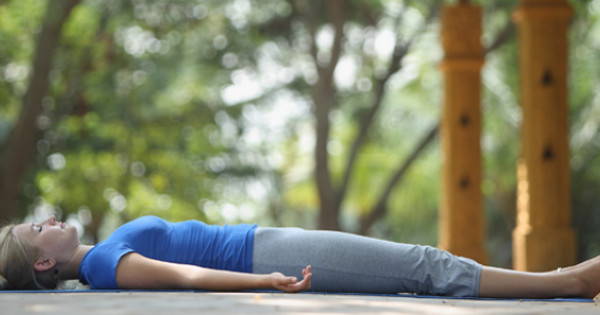
Hatha yoga, which is a branch in yoga that uses physical techniques for channeling and preserving the vital force of the universe, is one type. Its name comes from the Sanskrit word haha, which means life force. This discipline includes a variety of poses and mudras. It also uses bandhas and mudras.
Pose sequences
Hatha yoga has sequences and poses linked together to create flow. These sequences can be one-movement. Or they could be a series of poses that flow one after the other without interruption. Some sequences can be universal and others may only apply to one school or teacher.
Mudras
Hatha Yoga's Mudras can be described as a form or expression. This nonverbal form communication is used to connect with the subtle bodies and allow them to be influenced. These gestures direct prana's flow and incite an increased awareness.

Bandhas
Bandhas act as internal energy valves to redirect energy flow, activating dormant spiritual abilities within the embodied mind. Bandhas can be disrupted by yogic practices and open up a path to flow. This flow is a continual spiritual reconnect with the vast expanse of the being.
Flow phase
The Flow phase is Hatha yoga's integration of physical asanas with the conscious breathe. This improves flexibility and strengthens the muscles. These poses help to prevent injuries and reduce neck and back pain. They can help to reduce stress. This phase is excellent for beginners.
Asanas
Hatha Yoga is a discipline that incorporates physical exercises and breathing techniques to strengthen your body and mind. It is designed to bring harmony between the mind and body, as well as a balanced outlook on life. It is also a spiritual practice, which aims to transform the practitioner's thinking, emotions, and experiences.
Yamas
Focusing on the Yamas is a great way to make your practice more effective. They will help you to see patterns and discover their origins. As you examine your practice, you may experience an epiphany and a profound insight. You can integrate the Yamas into every aspect of your life by contemplation and reflection.

Niyamas
After mastering one Niyama, you may be ready to move on to the next. It is possible to attempt more than one Niyama at a given time. You should take your time, and not rush. Take some time to reflect on your experience. You might want to consider making some changes if you experience any difficulties in practising the Niyama.
Purification
Purification refers to the process of eliminating "rubbish” from the body and replacing with "positive" energy. Hatha yoga purification can often be described as a puritanic ritual. But the aim is to harmonize the body, mind, emotions. These practices can be very beneficial for many reasons, not just the physical. By applying these practices in a systematic manner, you can balance all aspects of your being.
Self-experimentation
Hatha Yoga's self-experimentation refers to the process of gaining insight into your own inner experience. Even though Hatha yoga poses are essential, they are not enough to bring about the desired results. Michelangelo was an artist who achieved great success. It is the same with people who succeed at business, literature or farming.
FAQ
What are the top types of yoga mats for you?
There are many different types of yoga rugs available. The size, price, durability, and cost of a yoga mat will all play a role in your decision.
A quality mat is thick enough to protect your floors from scratches, but thin enough that it can be moved quickly.
A cheap mat may not provide adequate support.
How long should a session of yoga last?
Yoga sessions last between 45 minutes- 1 hour. The type of Yoga you are practicing will impact the length of your yoga session. 45-60 minutes should be enough if your goal is to concentrate on strength-building activities. You may need to spend an hour if your goal is relaxation or meditation.
The length of the class will vary depending on the type of yoga you take. Some classes are fast-paced while others focus on slow, deep stretching.
What are the health advantages of yoga?
Yoga originated in India and is an ancient form of meditation. Yoga was created by Hindu monks to improve their mental and physical well-being over the centuries. Many people practice yoga to relax and relieve stress. Many people believe yoga can help them increase their strength and flexibility.
Yoga improves balance, coordination, and is a great exercise option for seniors who want to keep active. It can prevent injuries from falling or other causes.
Yoga is good for your heart because it strengthens your cardiovascular system. If you have diabetes, high blood pressure or are overweight, this is a good option.
Yoga has been shown to help reduce stress, anxiety depression, insomnia, and other symptoms. These conditions often lead to chronic pain, so practicing yoga may be especially beneficial for those with arthritis and fibromyalgia.
As you get older, your muscles naturally lose some elasticity. But yoga keeps your muscles flexible and strong. Yoga will give you more energy, stamina, and strength as you get older.
According to the National Institute on Aging regular yoga has been proven to reduce symptoms like fatigue and hopelessness. According to the institute yoga can increase bone density and lower cholesterol.
Yoga can also help with headaches and back pain. Because of its slow pace and gentle movements, yoga is particularly effective in relieving muscle strains.
Statistics
- The people in the yoga group were 37 percent more likely to have quit smoking by the end of the 8-week program. (nccih.nih.gov)
- Gentle yoga has been shown to ease some of the discomforts of tender, swollen joints for people with arthritis, according to a Johns Hopkins review of 11 recent studies. (hopkinsmedicine.org)
- Start your Fall off right with 20% off All Access Membership when you sign up by 9/25! (corepoweryoga.com)
- In comparison, a 125-pound person is estimated to burn 135 calories in 30 minutes of walking (at a pace of 15-minute miles) and 210 calories bicycling at a moderate pace on a stationary bike. (everydayhealth.com)
- According to calorie estimates calculated at Harvard Medical School, the average 125-pound person burns about 120 calories in a half hour of hatha yoga, and a 185-pound person burns about 178 calories in that half hour. (everydayhealth.com)
External Links
How To
Is it a good way for you to lose weight?
To answer this question, you need to understand what yoga is. Yoga is an ancient form or exercise that originated in India. It was developed by Indian yogis interested in achieving physical fitness and spiritual enlightenment.
Yoga focuses on stretching and strengthening muscles while simultaneously relaxing the mind and body. It is designed to bring about a state that is complete relaxation, free of stress and anxiety. Focusing on breathing techniques and meditation are the best ways to do this.
Yoga involves many postures, or poses. These are meant to stretch and strengthen certain muscle groups. These poses are typically held for several seconds at a time. They could also involve slow walking, jumping, and moving through mud.
The goal of yoga not to burn calories, but to increase energy is the main objective. Most people who practice yoga can maintain a healthy diet.
When you begin practicing yoga, you'll notice how much more relaxed you become. You'll notice a change in your mood and a better night's sleep.
Your skin will glow and you'll appear younger.
Many people notice a decrease in blood pressure once they begin yoga.
Another study has shown that yoga helps to reduce the symptoms of depression.
Yoga does not work in the same way that other forms of exercise. Instead, yoga increases oxygen circulation throughout the body. This allows your brain to relax, releasing endorphins that can stimulate feelings of happiness and joy.
You should know that not all people are able to lose weight. If this is you, you might want to avoid yoga until your goal weight.